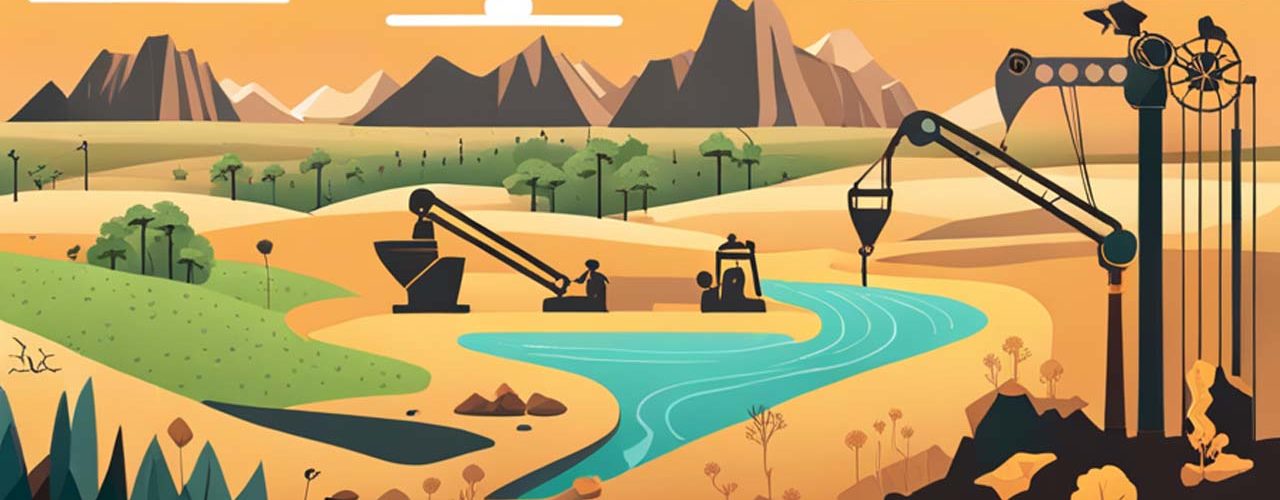The Environmental Impact of Australia’s Mining Industry: A Comprehensive Analysis

Today we’re going to dive into the world of Australia’s mining industry. Mining plays a massive role in the Australian economy, and it’s a significant part of our history. It’s no secret that mining is essential to Australia, but it’s also important to acknowledge the environmental impacts that come with it. In this article, we’ll explore the environmental impact of mining in Australia, discuss the regulations and policies in place to protect our environment, and examine some case studies of mining projects. Additionally, we’ll touch on sustainable mining practices that can help lessen the impact on our beautiful country. So, let’s get cracking!
Environmental Impact of Mining in Australia
The environmental impact of mining in Australia is a hot topic that we can’t afford to ignore. Mining activities can have significant effects on our air, water, and soil quality. These activities release pollutants and toxic chemicals into the environment, which can be harmful to both humans and wildlife. Moreover, mining can lead to habitat destruction and biodiversity loss, threatening our unique Aussie ecosystems.
Another significant concern is the contribution of mining to climate change. As we’ve mentioned earlier, mining activities release greenhouse gases, which play a significant role in climate change. As Aussies, we have a responsibility to prioritize sustainable living and work towards reducing greenhouse gas emissions in every aspect of our lives, including mining.
Regulations and Policies
To mitigate the environmental impact of mining, Australia has implemented various Regulations and Policies for Mining in Australia. These regulations aim to protect the environment, ensure sustainable development, and maintain the wellbeing of our communities. One critical aspect of these policies is the requirement for mining companies to adhere to strict environmental protection laws and regulations.
In addition to environmental protection, mining companies must also create rehabilitation and closure plans. These plans ensure that mined areas are restored to their original state or repurposed for other uses once mining activities have ceased. Compliance and enforcement measures are in place to ensure that mining companies adhere to these regulations and that any breaches are dealt with swiftly and effectively.
Case Studies
To better understand the environmental impact of mining in Australia, let’s take a look at a few case studies. Adani’s Carmichael coal mine has been a subject of controversy for years. The mine’s potential environmental impact includes the release of significant amounts of greenhouse gases, damage to water resources, and the potential to negatively affect the Great Barrier Reef. These concerns have led to fierce debate and ongoing protests against the project.
Rio Tinto’s destruction of Juukan Gorge in Western Australia is another example of mining’s impact on the environment and cultural heritage. In May 2020, Rio Tinto blew up a 46,000-year-old Aboriginal heritage site to expand their iron ore mine. This event sparked international outrage and highlighted the need for stronger regulations to protect cultural and environmental heritage.
The Great Barrier Reef, one of Australia’s most iconic natural wonders, is also impacted by mining. Increased sedimentation, pollution, and shipping traffic related to mining activities have been linked to the decline of the Reef’s health. The increasing frequency of coral bleaching events and the decline of various marine species have raised serious concerns about the future of this UNESCO World Heritage site.
Sustainable Mining Practices
To reduce the environmental impact of mining, it’s essential to adopt sustainable mining practices in Australia. These practices aim to minimize the negative effects of mining while maintaining the economic benefits it provides. Some sustainable mining practices include:
- Use of renewable energy sources: By incorporating renewable energy sources like solar and wind power, mining companies can reduce their dependence on fossil fuels and decrease their greenhouse gas emissions.
- Water conservation and management: Mining activities often require large amounts of water, which can strain local water resources. By implementing water-saving measures and recycling water, mining operations can reduce their impact on water resources.
- Waste reduction and recycling: Waste management is crucial to minimize pollution and reduce the environmental footprint of mining. Implementing waste reduction strategies and recycling waste materials can significantly improve the sustainability of mining operations.
Additionally, the mining industry must prioritize continuous improvement and adopt new technologies to further enhance their sustainability efforts. This could include investing in research and development, collaborating with experts in sustainability, and sharing best practices within the industry. By embracing these sustainable mining practices, the industry can play a crucial role in preserving Australia’s environment for future generations.
Conclusion
In conclusion, the environmental impact of Australia’s mining industry is an issue that we cannot overlook. As we’ve discussed, mining activities can negatively affect air, water, and soil quality, contribute to climate change, and threaten wildlife and biodiversity. It is crucial that the mining industry abides by the regulations and policies in place to protect our environment and works to minimize its impact.
As we’ve explored through case studies like Adani’s Carmichael coal mine, Rio Tinto’s destruction of Juukan Gorge, and the impact on the Great Barrier Reef, the consequences of unsustainable mining practices can be severe and far-reaching. It is imperative that the mining industry adopts sustainable mining practices, such as using renewable energy sources, conserving water, and reducing waste. By doing so, we can ensure that mining remains a vital part of Australia’s economy while prioritizing the protection of our environment.
It’s time for the mining industry to step up and prioritize environmental protection. As proud Aussies, we must demand that our resources are extracted responsibly and sustainably, ensuring that our unique landscapes and ecosystems are preserved for generations to come. To do your part, consider implementing energy efficiency tips at home and support businesses that prioritize sustainability. Together, we can make a difference for our environment and ensure a bright future for Australia.



